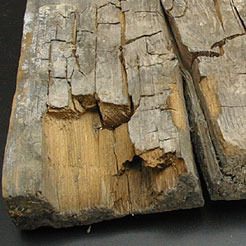
Dry rot is wood decay caused by certain species of fungi that digest parts of the wood which give the wood strength and stiffness. It was previously used to describe any decay of cured wood in ships and buildings by a fungus which resulted in a darkly colored deteriorated and cracked condition.
The life-cycle of dry rot can be broken down into four main stages. Dry rot begins as a microscopic spore which, in high enough concentrations, can resemble a fine orange dust. If the spores are subjected to sufficient moisture they will begin to grow fine white strands known as hyphae. As the hyphae germinate they will eventually form a large mass known as mycelium. The final stage is a fruiting body which pumps new spores out into the surrounding air.
Dry rot is the term given to brown rot decay caused by certain fungi that deteriorate timber in buildings and other wooden construction seemingly without an apparent source of moisture. The term is a misnomer because all wood decaying fungi need a minimum amount of moisture before decay begins. The decayed wood takes on a dark or browner crumbly appearance, with cubical like cracking or checking, that becomes brittle and can eventually crush the wood into powder. Chemically, wood attacked by dry rot fungi is decayed by the same process as other brown rot fungi. An outbreak of dry rot within a building can be perceived to be an extremely serious infestation that is hard to eradicate, requiring drastic remedies to correct. Eventually the decay can cause instability and cause the structure to collapse.
Source
Treating & preventing dry rot
Treating or preventing dry rot is a three step process.
Step 1 is to locate and stop the source of the moisture.
Step 2 is to replace any damaged wood that has become structurally weakened.
Step 3 is to treat new and existing wood with a borate wood preservative to prevent growth of the dry rot fungus and kill any fungus already in the wood.
Borate wood preservative is available as a dry powder or a glycol-based liquid concentrate. The powder form is generally less expensive but there's some evidence that glycol improves the absorption of borate into the wood fibres.
The life-cycle of dry rot can be broken down into four main stages. Dry rot begins as a microscopic spore which, in high enough concentrations, can resemble a fine orange dust. If the spores are subjected to sufficient moisture they will begin to grow fine white strands known as hyphae. As the hyphae germinate they will eventually form a large mass known as mycelium. The final stage is a fruiting body which pumps new spores out into the surrounding air.
Dry rot is the term given to brown rot decay caused by certain fungi that deteriorate timber in buildings and other wooden construction seemingly without an apparent source of moisture. The term is a misnomer because all wood decaying fungi need a minimum amount of moisture before decay begins. The decayed wood takes on a dark or browner crumbly appearance, with cubical like cracking or checking, that becomes brittle and can eventually crush the wood into powder. Chemically, wood attacked by dry rot fungi is decayed by the same process as other brown rot fungi. An outbreak of dry rot within a building can be perceived to be an extremely serious infestation that is hard to eradicate, requiring drastic remedies to correct. Eventually the decay can cause instability and cause the structure to collapse.
Source
Treating & preventing dry rot
Treating or preventing dry rot is a three step process.
Step 1 is to locate and stop the source of the moisture.
Step 2 is to replace any damaged wood that has become structurally weakened.
Step 3 is to treat new and existing wood with a borate wood preservative to prevent growth of the dry rot fungus and kill any fungus already in the wood.
Borate wood preservative is available as a dry powder or a glycol-based liquid concentrate. The powder form is generally less expensive but there's some evidence that glycol improves the absorption of borate into the wood fibres.

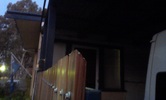
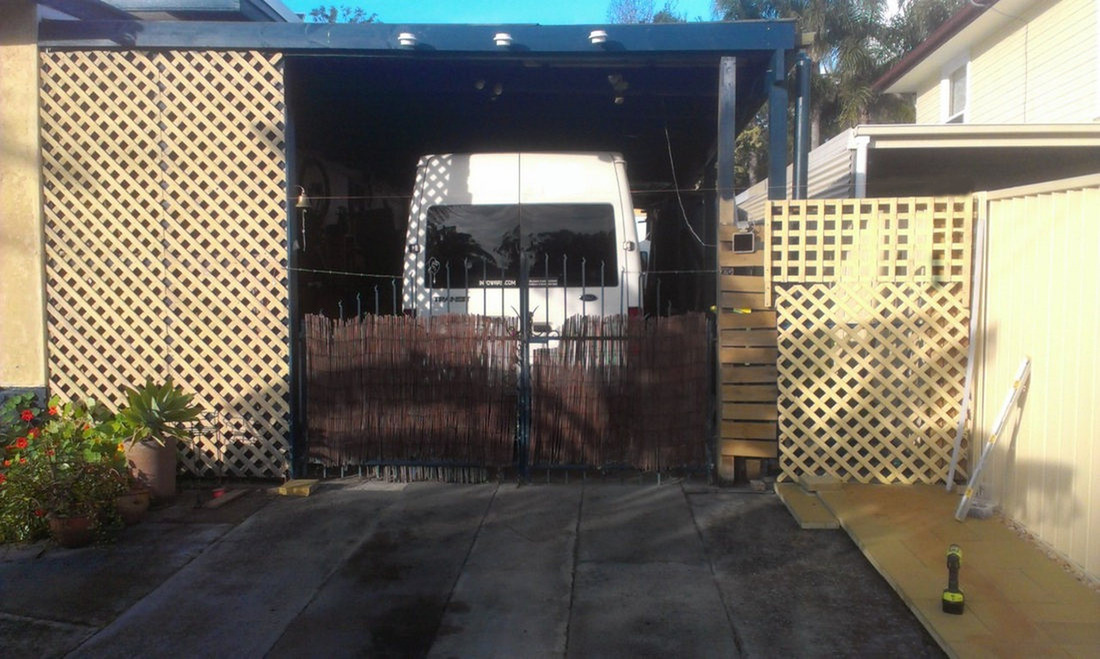
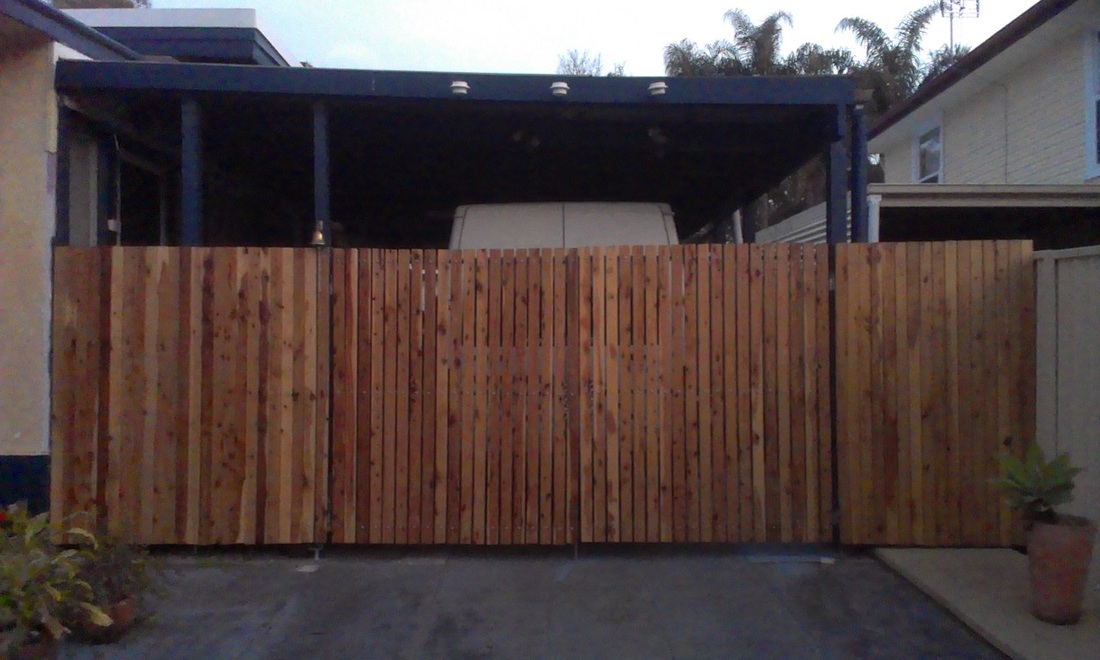
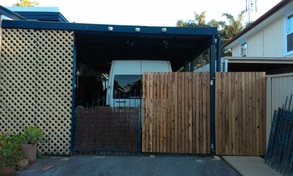
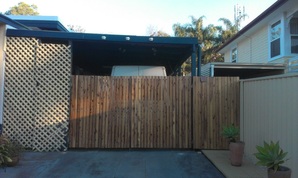

 RSS Feed
RSS Feed
